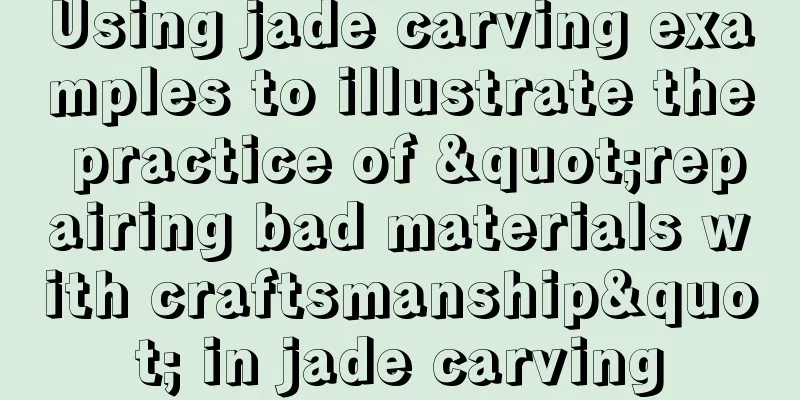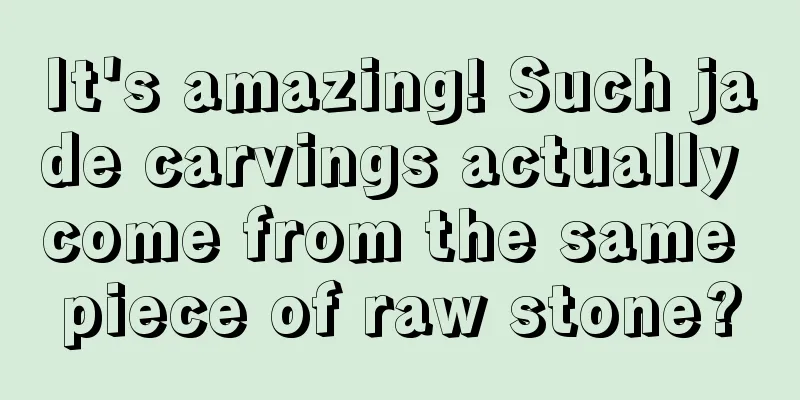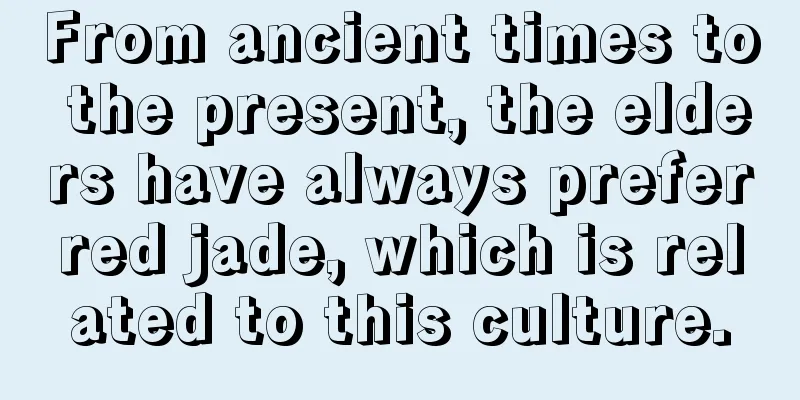Using jade carving examples to illustrate the practice of "repairing bad materials with craftsmanship" in jade carving

|
To evaluate the value of jade, we generally measure it from five aspects: type, water, base, color, and workmanship. The first four factors are the natural quality of jade, which fundamentally determine the value of jade. Craftsmanship refers to the acquired carving of jade, which is the ultimate way to enhance the value of jade. In high-end jade, the carving of jade has little impact on the overall value of the finished product, but in general jade, the carving of jade affects the value of the finished product, just as the popular saying in the jade carving circle says: "If the material is not good, the craftsmanship can save it." Just like the small material I am going to share today, its shape is large in the middle and small on both sides. Under the light we can see that the water quality is just ordinary glutinous ice material, and the base is average. Its advantage is that it has no obvious flaws. Judging from the quality and shape of this material, it is suitable for making lucky melons, but there will not be much surprise when making lucky melons from this material, and the value of the finished product is also average! Because of this value situation, the jade carving master decided to try the idea of "if the material is not good, the craftsmanship can save it" to create this material. After weighing and analyzing, he finally composed the material into an octopus-themed pendant according to the shape of the jade: this composition arranges the octopus's big round head on the protruding part in the middle of the jade, and reasonably divides the octopus claws around it. The carving uses a combination of round carving and openwork carving to carve patterns, and the octopus's eight claws are carved through openwork. These hollow parts increase the ability of light to penetrate jade, improve the refraction of light, and play a role in regulating the water of the octopus, making the finished product more transparent and jade-like. On the back of the three-dimensional round sculpture, the line pattern echoes the front shape, and the copper coin designed at the bottom of the octopus serves as the "finishing touch" - the octopus is commonly called octopus, and in jade carving culture, "eight" is homophonic to "fa", and the octopus has eight claws, so the combination has the beautiful meaning of making a fortune! When we finally pick up the goods, we can see that although the natural water quality of the jade is average, through clever water adjustment techniques, it also has a faint sticky feeling.
|
<<: Which do you prefer, plain jade or carved jade?
>>: How is the value of jade carving reflected?
Recommend
Why are jade bracelets expensive? How to choose jade beads?
Why are jade bracelets expensive? How to choose j...
As the saying goes: If jade is not carved, it will not become a useful object! Then why do people say “good jade does not need to be carved”?
Nowadays, jade resources are becoming increasingl...
How about the jade brand designed and carved by a master craftsman with thirty years of jade carving experience?
This is a tri-color jade bracelet core. The rich ...
Jade, we like high-end ones
Why do you like high-end? The answer is just one ...
If you want to double the price of good jadeite, it depends on how good the sculptor is.
"If jade is not carved, it will not become a...
How to judge the quality of jadeite?
From the late 20th century to the present, the co...
Carving a "cicada" out of an ordinary jadeite stone, does it feel like jade carving is very simple?
Today I will show you the process of carving a &q...
Analysis of the value of jadeite, is it feasible to invest in jadeite?
Since ancient times, jade has been regarded as th...
Jade · Impression | She has many different styles, which one do you like?
As soon as jadeite was born, its unique material ...
The Jadeite Wu Shi Pai is suitable for people
I remember that I introduced to you the meaning o...
The Three Traditional Meanings of Jade Cabbage
There are many kinds of vegetables all over the c...
The value of jadeite has skyrocketed! Which type of jade has the most investment potential this year
As the saying goes: Hide gold in troubled times a...
What is the difference between a man who loves jade and a woman who loves jade?
Someone once said that men are from Mars and wome...
Laboratory Identification - Jadeite
Jade is very popular in my country and the market...
Six principles for not buying jadeite, you will regret it if you don’t check them out!
Chinese people have loved jade since ancient time...









